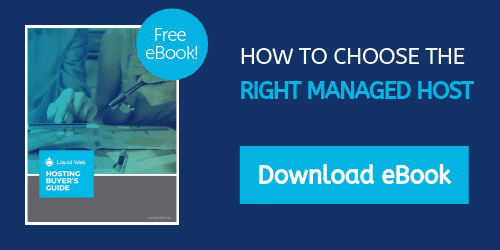
Is your server running slowly? Are you running low on storage space? If so, it may be time to look at a hard drive upgrade. Granted, the issue may lie elsewhere on the server, but oftentimes, a new drive may be needed. This begs the question: should you choose a cheaper, traditional hard disk drive, or should you take the plunge and buy a faster solid state drive for your hosting server? In this guide, we show you the differences between SSD vs HDD in terms of performance and speed, capacity, efficiency, lifespan, power consumption, and cost.

What is a Solid State Drive (SSD)?
A Solid State Drive (SSD) is a server storage device that retains data in flash memory instead of a magnetic-based system like a hard disk drive. By definition, “flash memory is an electronic (solid state) non-volatile computer memory storage medium which can be electrically erased and reprogrammed.” A solid state drive is defined by its ability to store server data using the reliable attributes of a durable cluster of semiconductors. Because solid state drives do not depend on moving parts or spinning disks, stored data retrieval speed is faster.

What is a Hard Disk Drive (HDD)?
A Hard Disk Drive (HDD) is a non-volatile, hardware data storage device attached to a computer or server. An HDD magnetically stores, retrieves, and outputs digital information using a series of stacked rotating metallic platters that have been coated with magnetic material. The rotating disks are paired with an actuator arm that reads and writes the digital data to the server disks.
SSD vs HDD Performance Summary
| SSD | Parameters | HDD |
|---|---|---|
| 0.1 ms | Access Times | 5.5~8.0 ms |
| 6000 io/s | I/O Performance | 400 io/s |
| 20 ms | I/O Request Time | 400 ~ 500 ms |
| 0.5% | Lifespan (Failure Rate) | 2 ~ 5% |
| 2 & 5 Watts | Energy Savings | 6 & 15 Watts |
| 1% | CPU Power Consumption | 7% |
| 6 Hours | Backup Rates | 20~ 24 Hours |

Performance and Speed
In terms of SSD vs HDD performance, an SSD has data access speeds of 40 to 100 microseconds, nearly 100 times faster than an HDD.
Solid state drives continue to dominate the hard drive market’s growth because of the ongoing improvements being made to the solid state drives. Major manufacturers like SanDisk, Samsung, Sun Microsystems, and Toshiba continue to improve the speed, space, and stability of SSDs.
In the server market, SSD offers faster read and write times, which increases hosting server speed and performance by an average of 95%. This, in turn, decreases page load times, leading developers to invest more functionality in web-based applications. This allows users to take advantage of and utilize more functional websites. SSDs increase the data transfer rate, which increases the servers’ overall speed and responsiveness.
Increased access speed means programs can run quicker and work harder with less stress on the server.
Because every storage block is available at the same speed as every other storage block, the access rate is exponentially enhanced. This means that solid state drives throughput is dramatically faster than an HDD.

Capacity
HDD: As of August 2020, hard disk drives typically average capacity of 1 to 8 terabytes, with larger capacity drives reaching 20 terabytes or more soon.
SDD: As of July 2020, Solid state drives ranging from 50-100 terabytes are available for sale.
Capacity is always a factor when selecting a storage medium. SSD drives offer the greatest return on investment due to the larger sizes available and pricing options. Scaling businesses may require more hosting storage as they grow, making SSD an ideal choice.
Since the two are very different technologies, each has very different physical sizes if that comes into play for your build.

Efficiency
In terms of efficiency, solid state drives outperform conventional hard drives due to higher reliability, consumption of less power, and faster read/write times.
SSDs have no variable seek time or rotational latency issues, since solid state drives read and write to NAND cells, which is fundamentally different than how HDDs read and write files. It’s much faster, and consumes less power than HDDs.
HDDs require physical mechanical movements in order to read and write data to the disc, which takes more time and consumes more power vs SSD.

Lifespan
In terms of SSD lifespan vs HDD, the age limit for SSDs are around 10 years, whereas HDD drives will last approximately three to five years.
Since solid state drives have no moving parts to wear down or break, they typically provide better performance and an improved lifespan over HDDs.
Additionally, SSD provides enhanced data integrity and endurance since they retain data even when powered down. The average SSD lifespan can be shorter than 10 years, depending on specific use cases.
Because server HDDs are typically reading/writing data 24/7, they tend to require maintenance more often. Additionally, HDDs’ failure rates continue at approximately 2-5% per year versus SSDs, which only have a failure rate of 0.5% per year.
This being said, SSD does have a downside. There is a finite number of writes available, which will cause the eventual need for a replacement solid state drive to be employed. Some estimates place about 3,000 write cycles average per cell before breakdown.
Additionally, some drives may arrive from the factory with degraded cells, which can cause an exponentially faster breakdown and cause the drive’s early failure.

Power Consumption
Typically, the power consumption for an HDD is about 7 percent of the server’s power vs an SSD which uses approximately 1 percent.
SSD drives require less power and cooling than other types of storage media. Because of this, they produce less heat than a regular hard disk drive, which lowers the need for heat dissipation. HDD drives generate more heat due to the mechanical action of the disk.
Solid state drives perform better because they spend more time in an idle state compared to an HDD. This simply means that an SSD delivers a larger magnitude of increased efficiency per watt than an HDD.

Cost
There continues to exist a significant market share for traditional HDDs. As pricing continues to fall and raid array usage provides a large amount of storage space, SMBs often take advantage of the lowered total cost of ownership traditional storage mediums offer.
The lower costs associated with large HDDs versus the newer SSDs medium permit a reliable alternative option for many businesses, depending on their needs. The overall cost, however, continues to narrow.
SSD or HDD: Who Wins?
Currently, the benefits of using an SSD vs HDD drive in your current server setup will be shown in an overall increase in capacity, performance, and lifespan. This means that with the addition of SSD to your server, the amount of data you will be able to store will increase, with an overall lower total cost per gigabyte.
A solid state drive provides critical time-savings in the overall conversion time for server data if you are rendering graphics or processing videos. If analyzing significant amounts of information, SSDs offer a drastic reduction in processing time and server load.
Additionally, the ability to stream videos in real-time will dramatically increase, which will allow for no-lag video streaming.
[ad_2]
Source link







